
The canals of Venice (canale, rio, rielo Venezia) are waterways in Venice, which are the highlight and the main attraction of Venice, and thanks to which the "city on the water" attracts numerous tourists.
The canals are located both in the historical island center of Venice and in the populated centers of the Venetian Lagoon, such as Murano, Burano, Torcello and others.
In general, in the historical island Venice, which is the main tourist part of the city, there are only four channels designated as "canale". These are: the Grand Canal (Canal Grande), the Cannaregio Canal (Canale di Cannaregio), the Giudecca Canal (Canale della Giudecca) and the Scomenzera Canal (Canale della Scomenzera). There are also many small channels called "rio" (rio) and the smallest ones called "rielo" (rielo).
Nevertheless, in a general sense, the common name "canals" is used for all waterways of Venice.
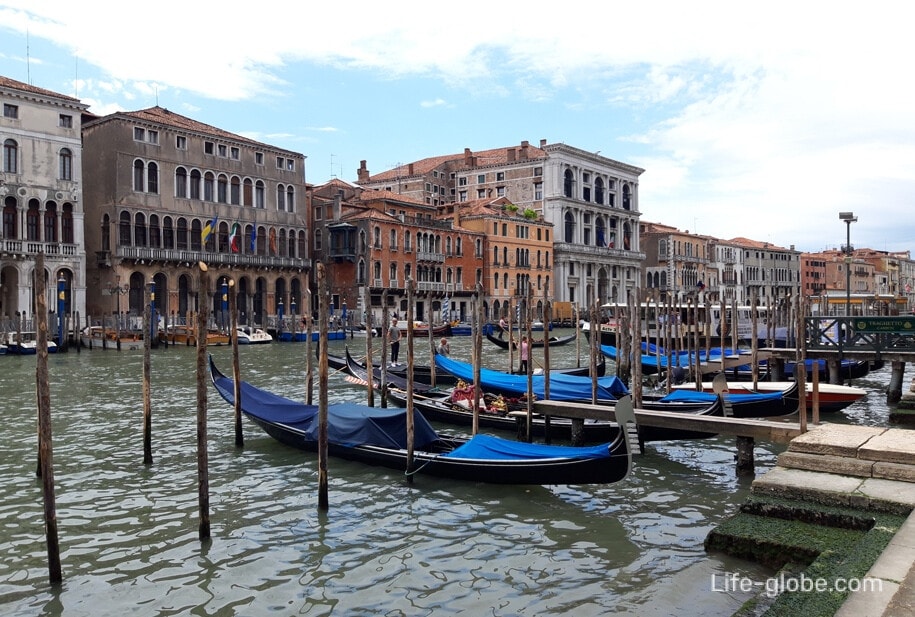
Numerous bridges connecting the islands are thrown across the Venetian canals. Thus, Venice has 435 public and private bridges that connect 118 islets on which the city is built, crossing 176 channels.
Because of such an abundance of canals, Venice is called a city on the water and even a floating world.
Thanks to its urban features and artistic heritage, Venice is considered one of the most unusual and beautiful cities in the world, declared a UNESCO World Heritage Site. Well, whoever wants to take a walk in an area where there is no ground transport, and you are literally surrounded by water from all sides.
Along the canals of Venice, buildings stretch in dense rows, among which there are residential buildings, palaces, museums, churches and basilicas. In the buildings along the canals there are shops, souvenir shops, cafes, restaurants and accommodation facilities (hotels, apartments)
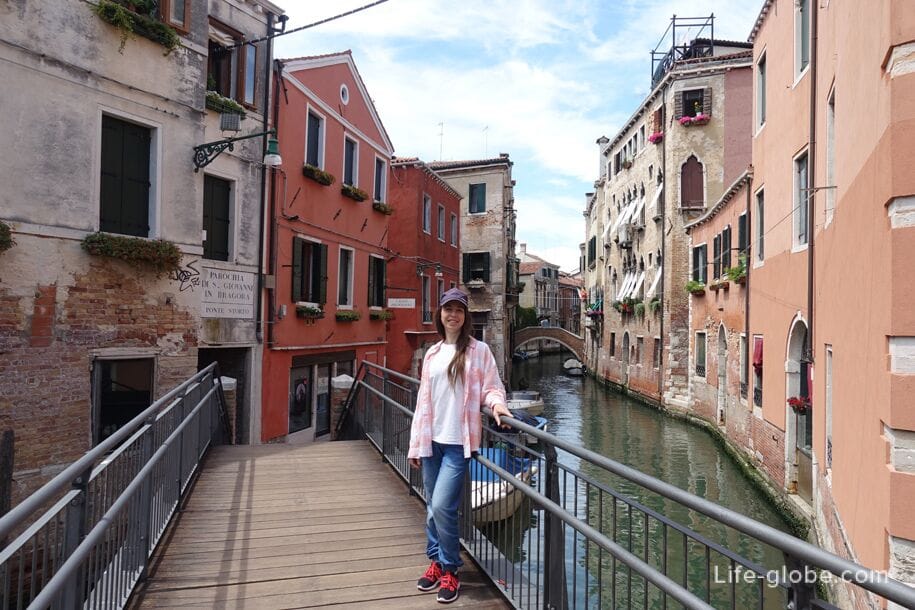
Most of the buildings along the canals approach directly to the water, so it seems that they come directly from the waters of the canals.
There are also areas in the city where sidewalks-embankments run along the canals.
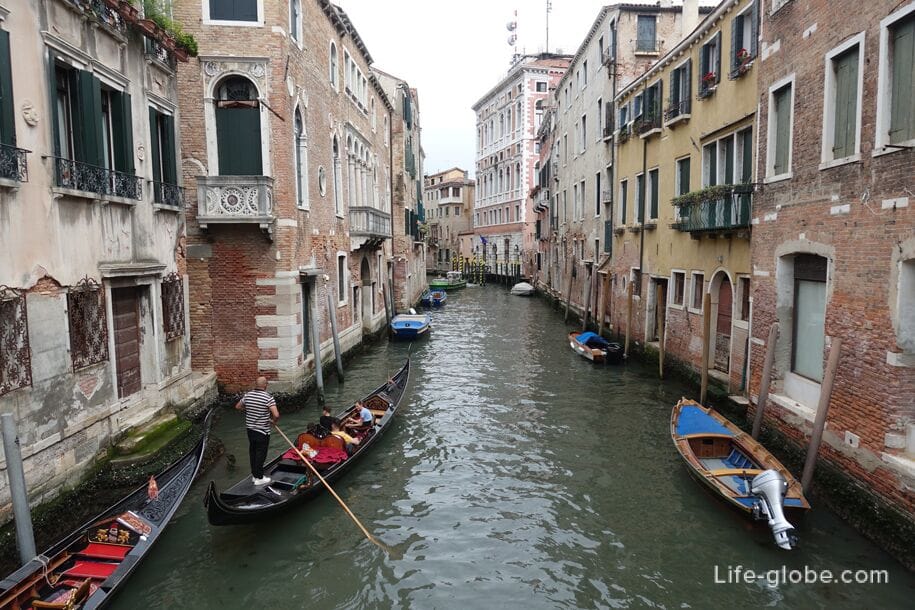
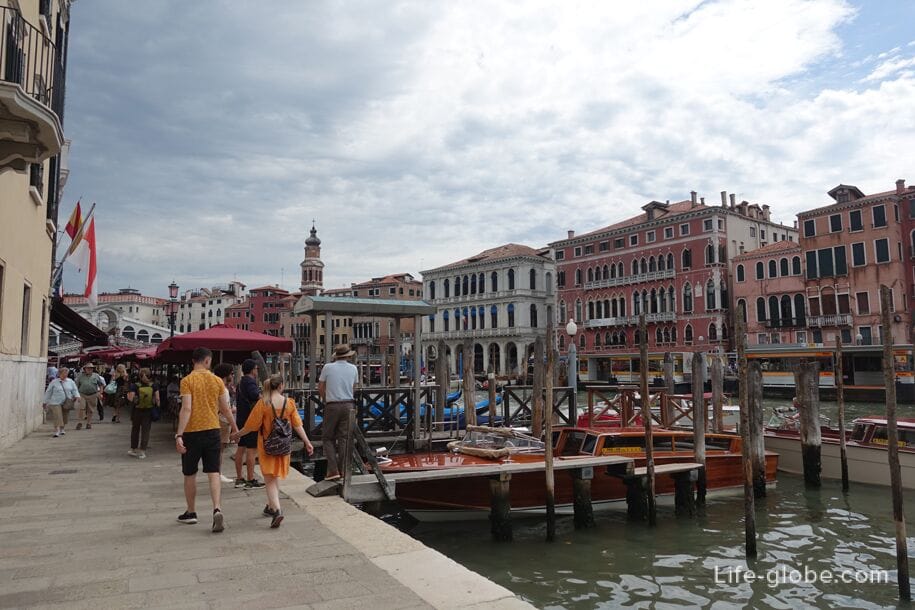
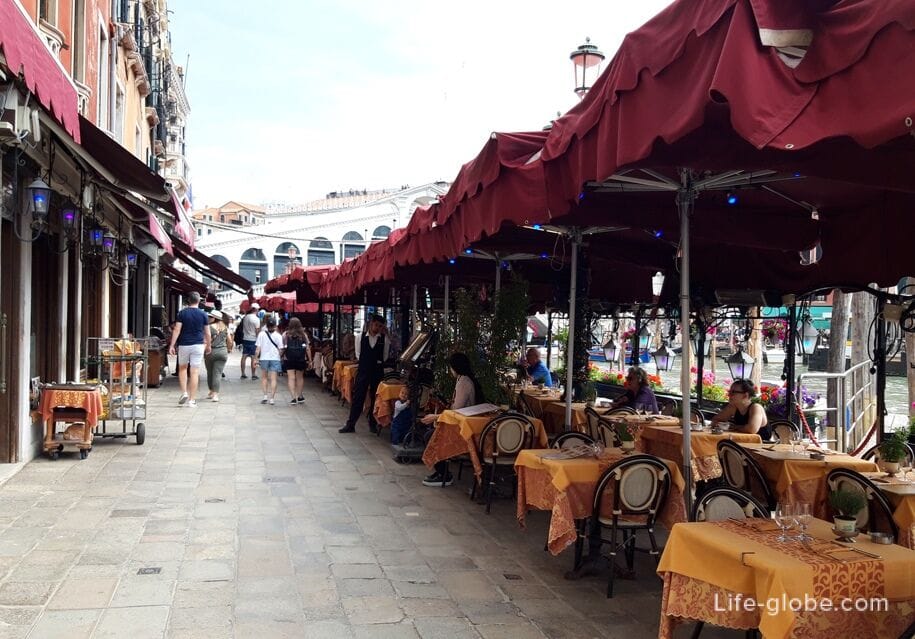
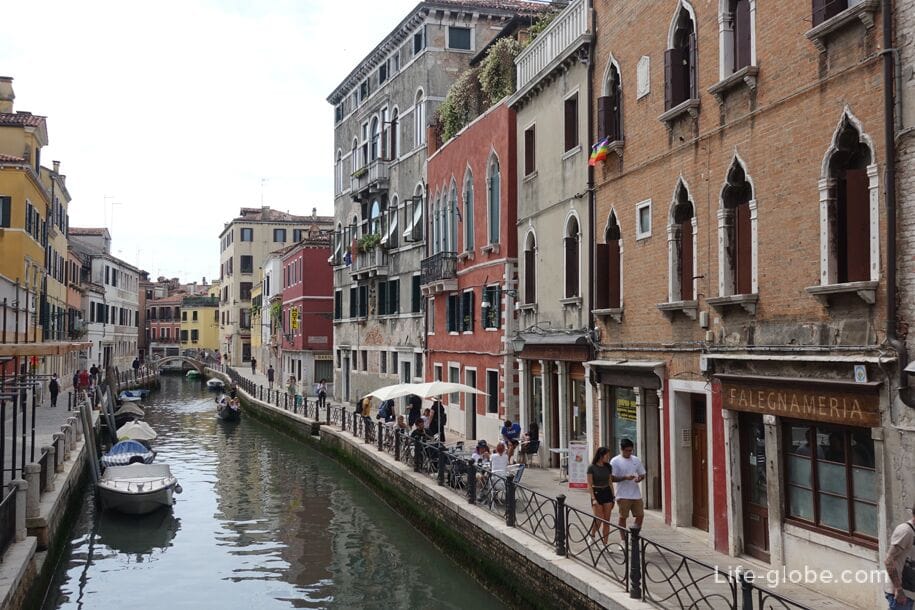

The term "canal" is used to refer to waterways that, due to their width, length and traffic density, are the main waterways of Venice and form the basis of the navigation system inside the city.
The Grand Canal or Grand Canal (Canal Grande, Venetian name: Canal Grando) is the main, most famous and largest canal of Venice, crossing the historical center of the city.
The Grand Canal, starting from the lagoon near the Santa Lucia railway station, passes through the entire "main" historical island part of Venice and exits into the San Marco (St. Mark's) basin, thus forming the shape of an inverted letter "S".
There are bridges across the Grand Canal. Along the canal there are unpaved sections of embankments and along the entire canal there are exquisite buildings of various architectural styles, among which there is an abundance of former palaces and mansions, there are also museums, churches and a basilica.
All this creates an unsurpassed ensemble of the channel, the types of which are widely recognized all over the world.
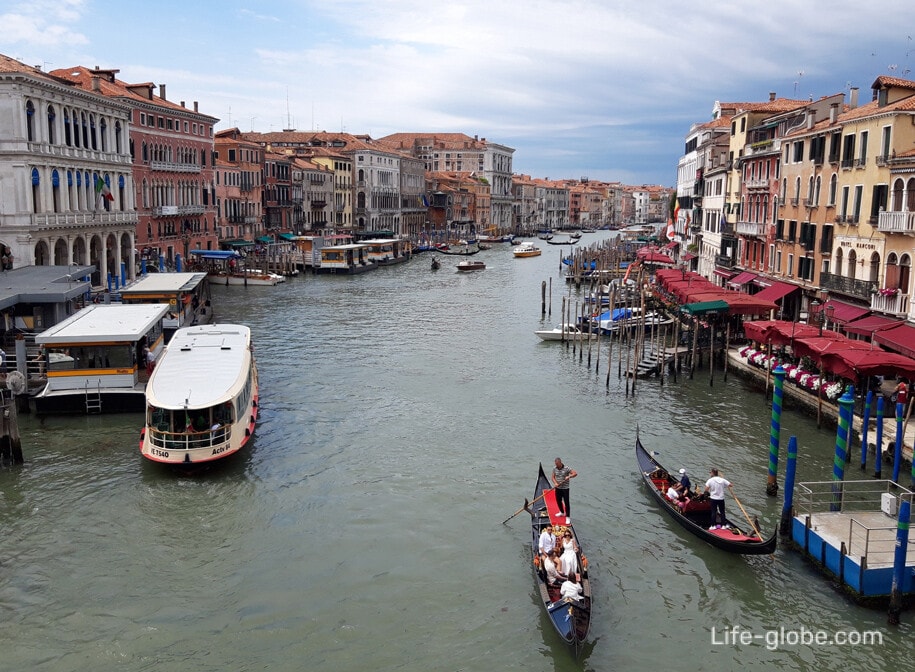
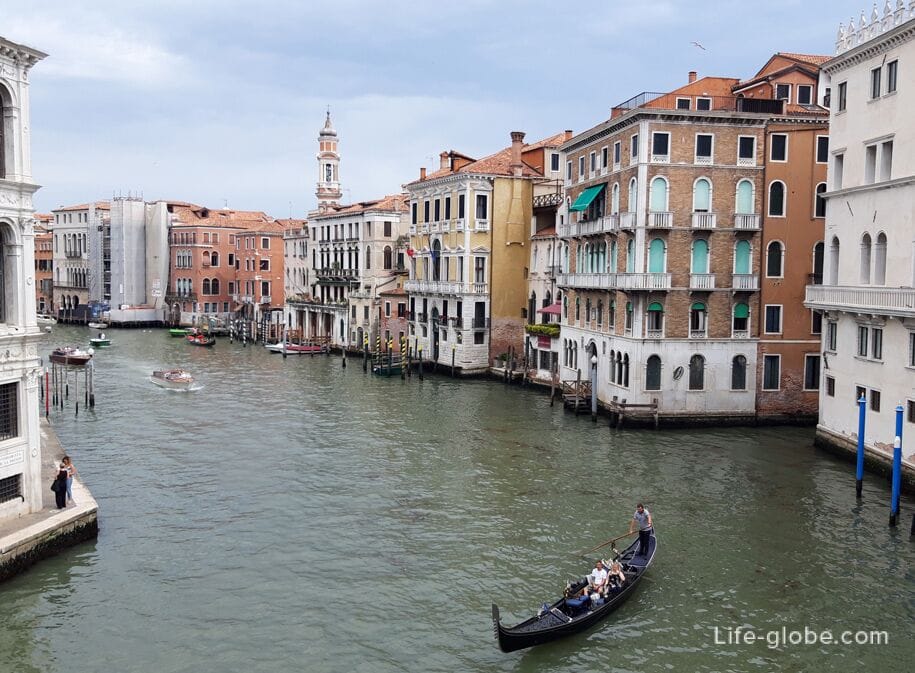
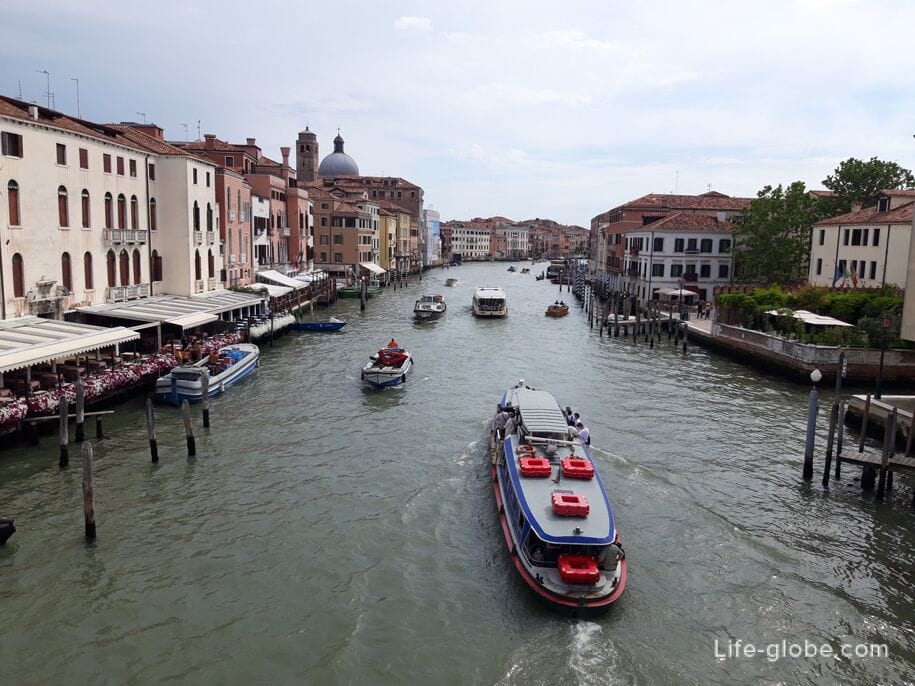
There are four bridges spanning the Grand Canal, the most famous of which is the Rialto Bridge (Ponte di Rialto, Ponte di Rialto), considered one of the symbols of Venice.
It is the oldest of the four bridges across the canal. The current bridge was completed in 1591.
The bridge is made in the form of an arch, has some decorations and architectural railings. There are benches on the bridge, separated in the center by two powerful arches. Between the rows of shops there are stairs leading to the center of the bridge, starting at the edges of the bridge. The shops sell souvenirs, leather and jewelry. Learn more about the Grand Canal and bridges...
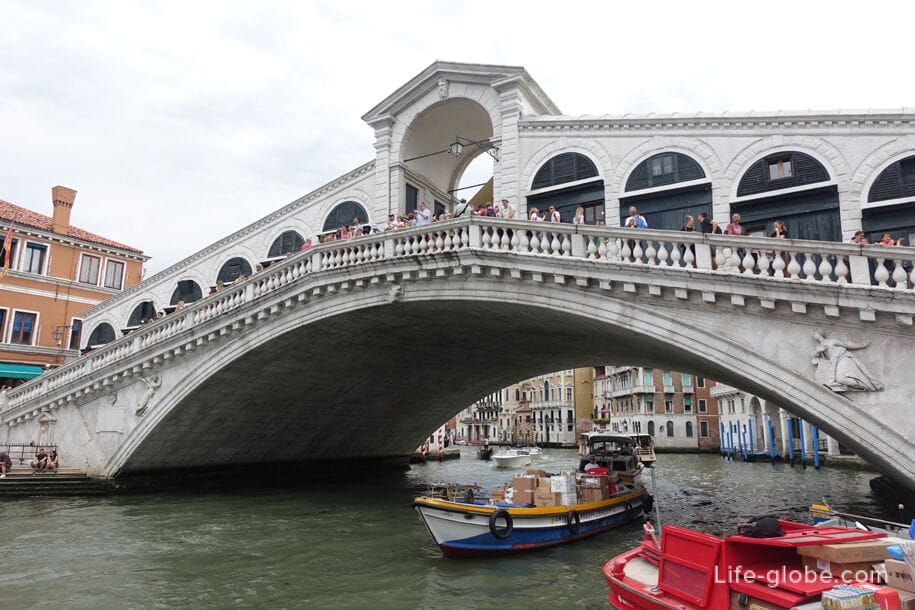
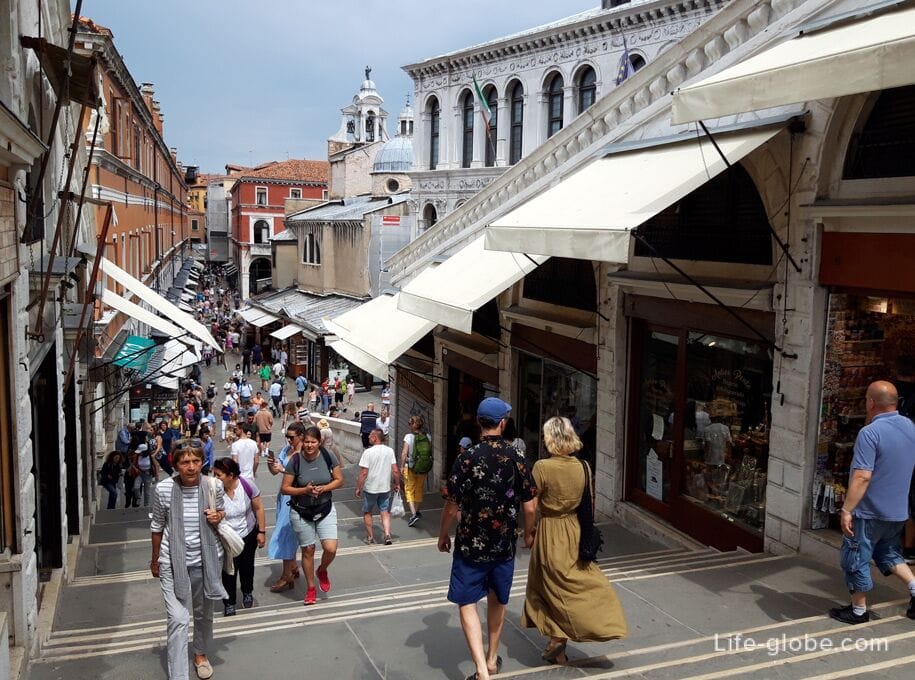
The Cannaregio Canal (Canale di Cannaregio) connects the Grand Canal with the northern lagoon, crossing the western part of the Cannaregio district (Cannaregio).
The canal is 22 to 27 meters wide and almost 800 meters long.
The statue depicting San Giovanni Nepomuceno, by Morlighter, is located on the west bank of the Cannaregio Canal at the entrance to the Grand Canal.
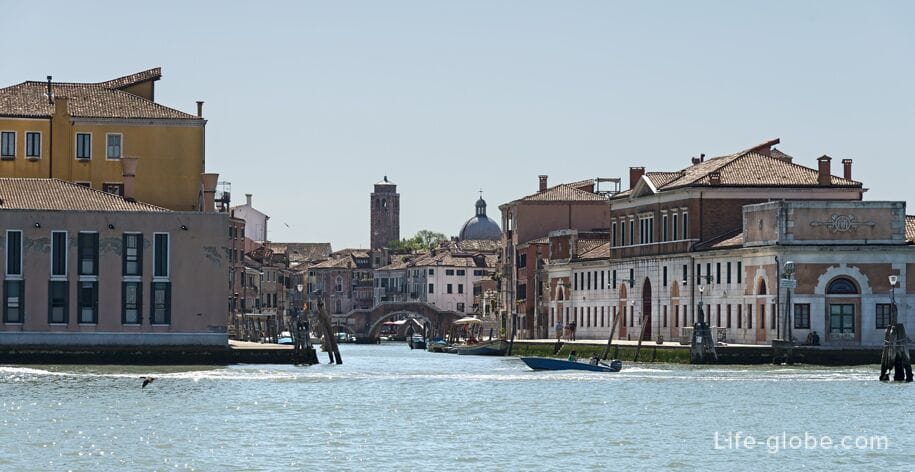

The Cannaregio Canal is crossed by two bridges:
- bridge of spires (Ponte delle Guglie, Ponte delle Guglie), built in the 16th century and is the only one in the city with decoration in the form of spires;

- the Bridge of three arches (Ponte dei Tre Archi, Ponte dei Tre Archi), which is the only example of a multi-arch bridge still existing in Venice.
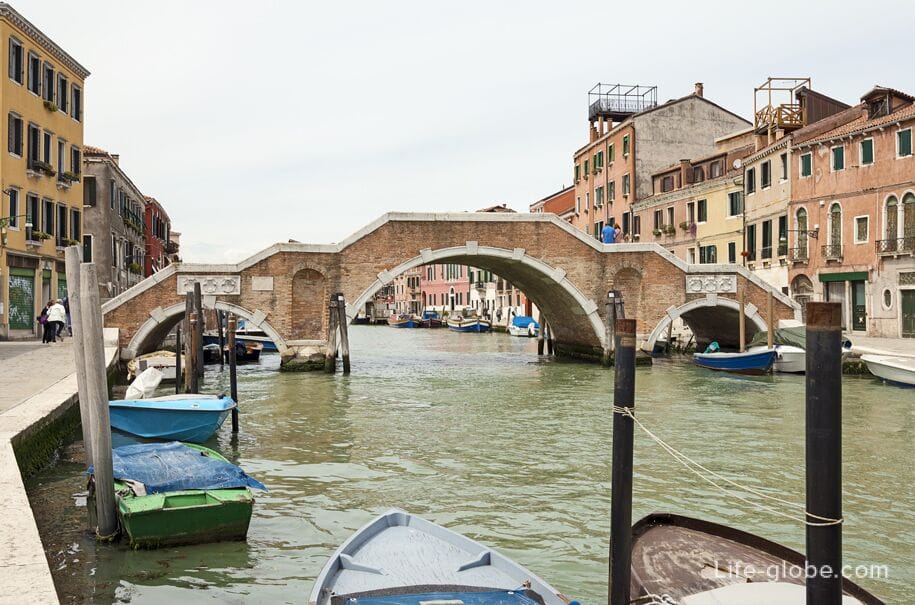
Along the Cannaregio Canal, notable buildings are: Palazzo Labia, Palazzo Priuli Venier Manfrin, Palazzo Savorgnan, Palazzo Bonfadini Vivante, Palazzo Testa and Palazzo Surian Bellotto.
Churches along the canal: Santa Maria dei Penitenti (Chiesa di Santa Maria delle Penitenti) and its monastery complex, San Giobbe (Chiesa di San Giobbe) and San Jeremia (Chiesa di San Geremia) with one of its two facades.
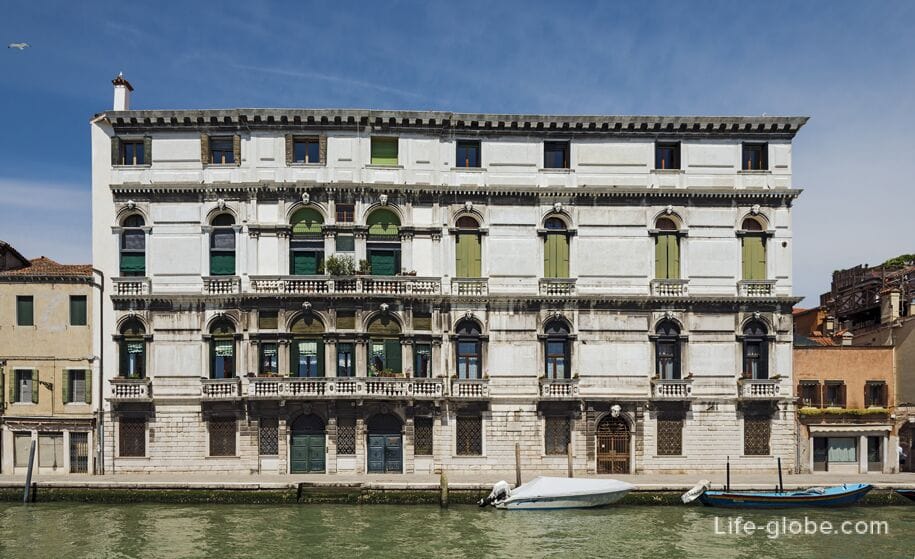
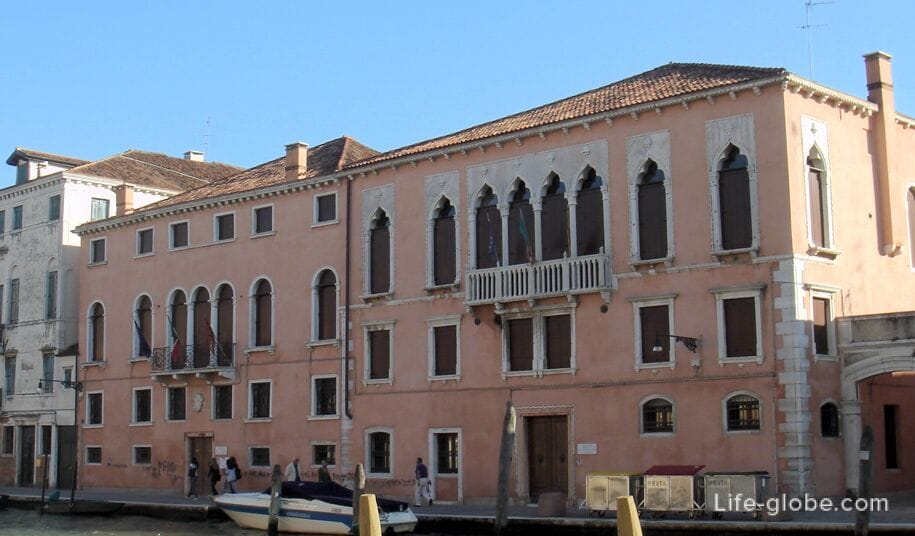
The Giudecca Canal (Canale della Giudecca) flows into the San Marco Basin (St. Mark's, bacino di San Marco) and flows between Giudecca Island and Dorsoduro district and usually large cruise liners heading to the port pass through the canal.
The canal is about 4 kilometers long, from 244 to 450 meters wide and from 4.1 to 12 meters deep.
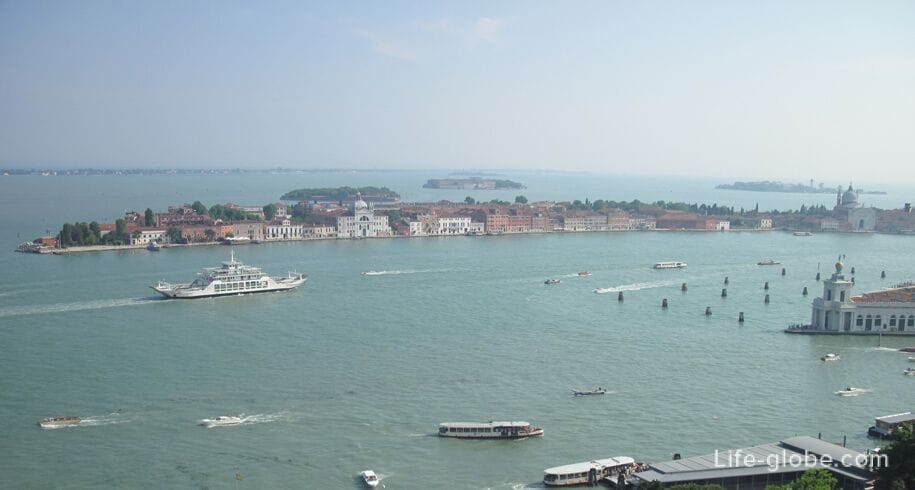
Among the main buildings that overlook the Giudecca Canal are: Moloni Stucchi Palace (Molino Stucky, now the Hilton Molino Stucky Venice 5-Star Hotel 


The Scomenzera Canal (Canale della Scomenzera) is named from "Scomenzera", that is, built by man.
It is quite young, man-made and located in the districts of Santa Croce and Dorsoduro. This canal, together with the Santa Chiara Canal (Sante Claire Canal), is a single whole and is an important transport artery that connects the Grand Canal near Piazzale Roma (buses stop here) with the Giudecca Canal.
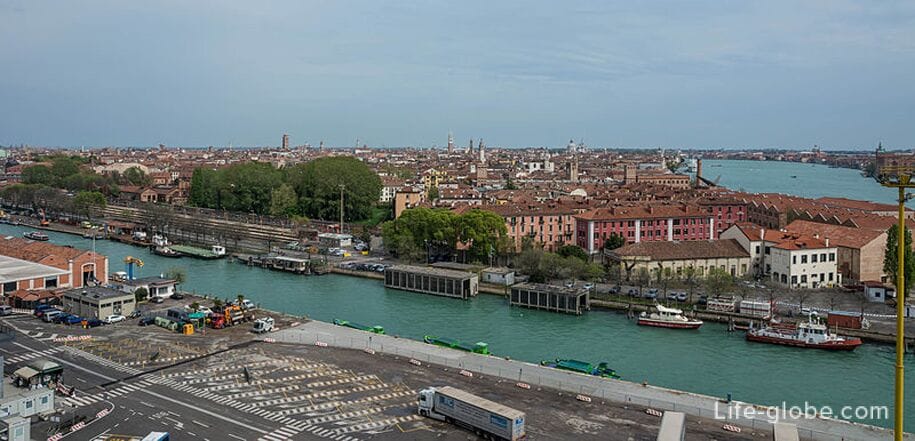
Small canals in Venice are called "rio" (rio). This term refers exclusively to small channels, natural or artificial, bordering buildings or roads that separate the individual islands that make up the island of Venice. In urban toponymy, some of the smaller channels are referred to by the term "rielo" (rielo).
There are many such channels in Venice. Numerous small single-branched bridges are thrown across these channels.
The most beautiful of the small bridges of the island historical center of Venice is the Baroque hinged closed bridge of Sighs (Ponte dei Sospiri, Ponte dei Sospiri), which spans the narrow Palace Canal (Rio del Palazzo, Rio di Palazzo) and, approximately at the level of the third floor, connects two buildings on the banks of the canal - the Doge's Palace (Palazzo Ducale) with the building of the New Prison (Prigoni Nuove). You can visit the bridge and the building of the new prison when visiting the Doge's Palace.
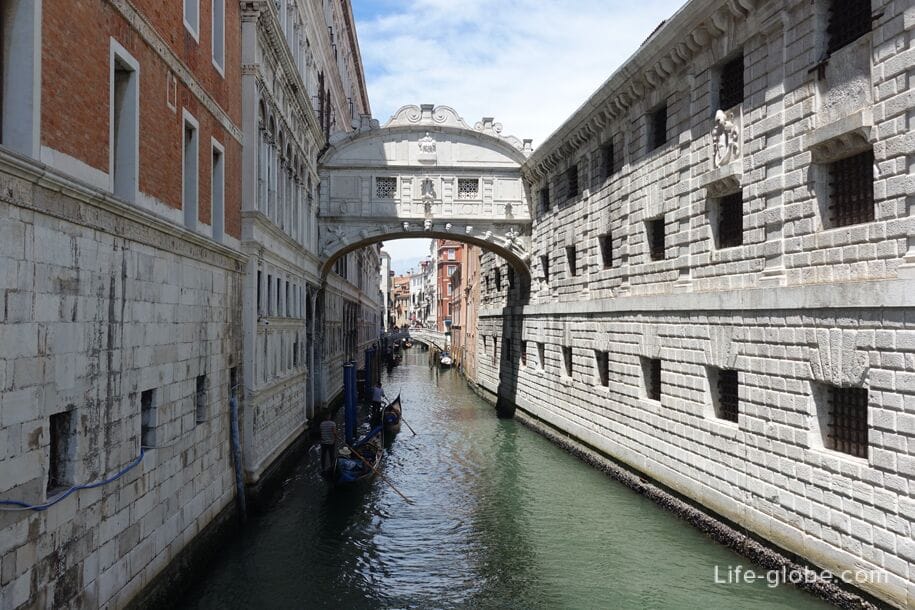
Another outstanding channel of the "rio" of the historical center of Venice is the Arsenal Canal, where the Arsenal of Venice (Arsenale di Venezia) is located - a historical complex of shipyards and workshops, thanks to which the Republic of Venice could fight the Ottomans in the Aegean Sea and conquer the routes of Europe.
The Church of San Biagio ai Forni (Chiesa di San Biagio Vescovo) and the Museum of Naval History of Venice (Museo Storico Navale di Venezia) are also part of the arsenal. More about the arsenal, museum and church...

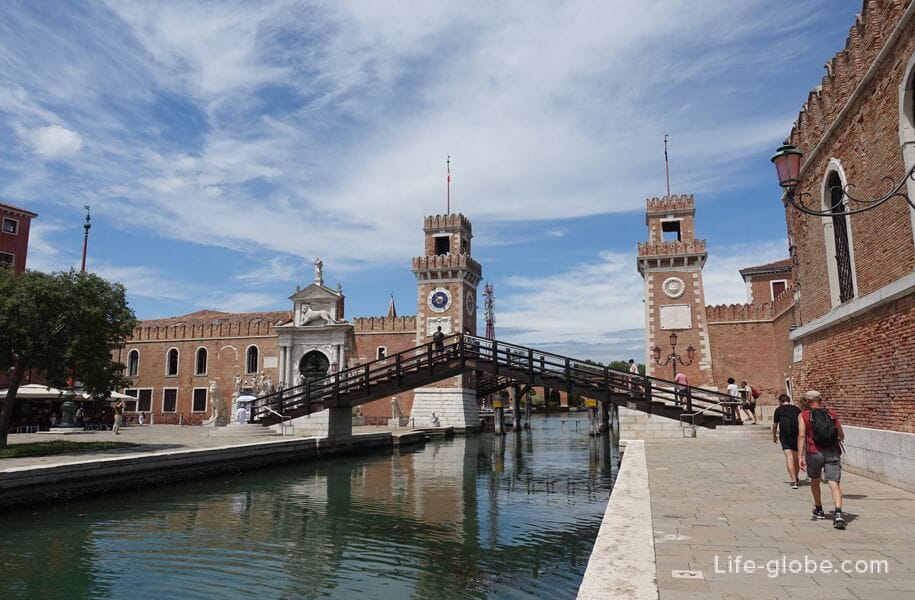
Photos of small canals and bridges of Venice
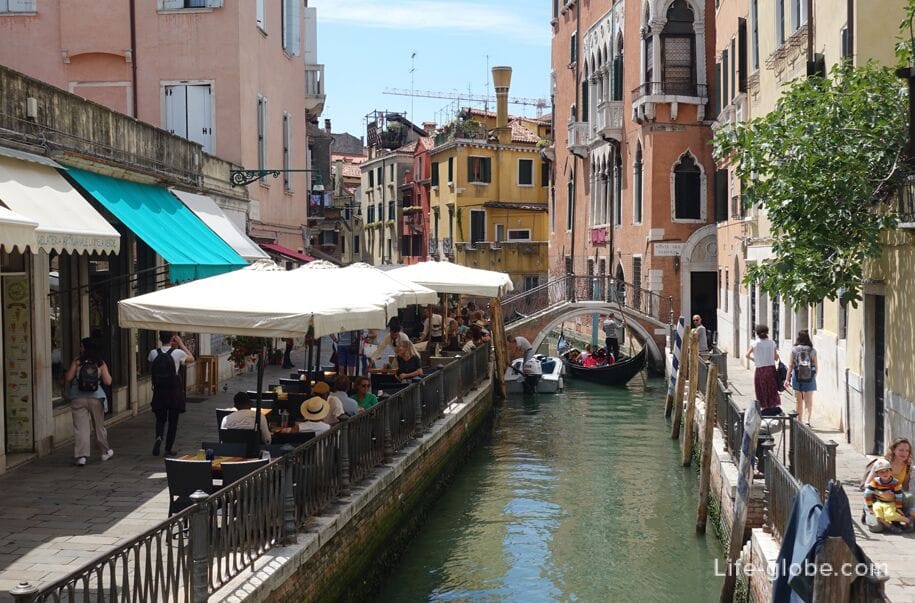

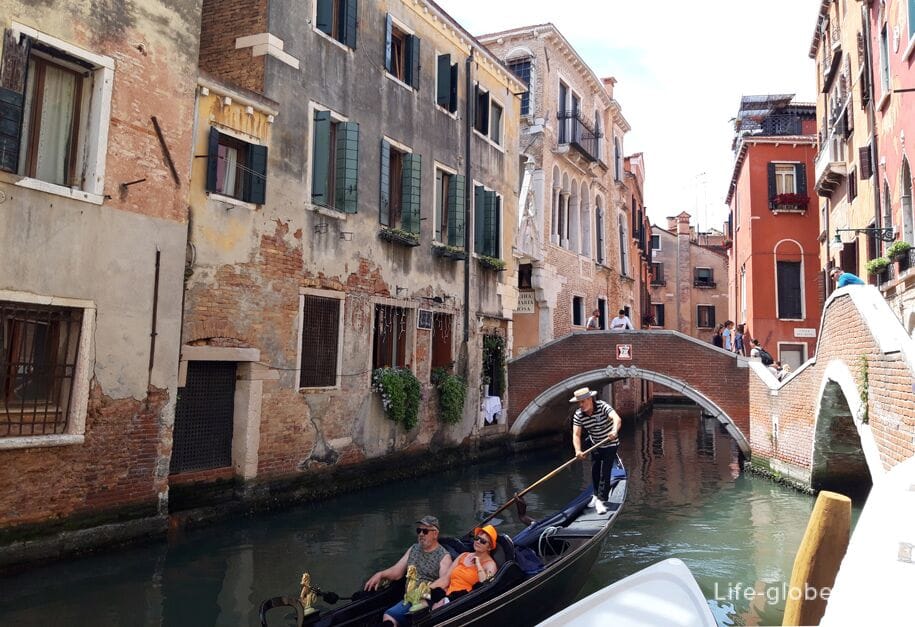
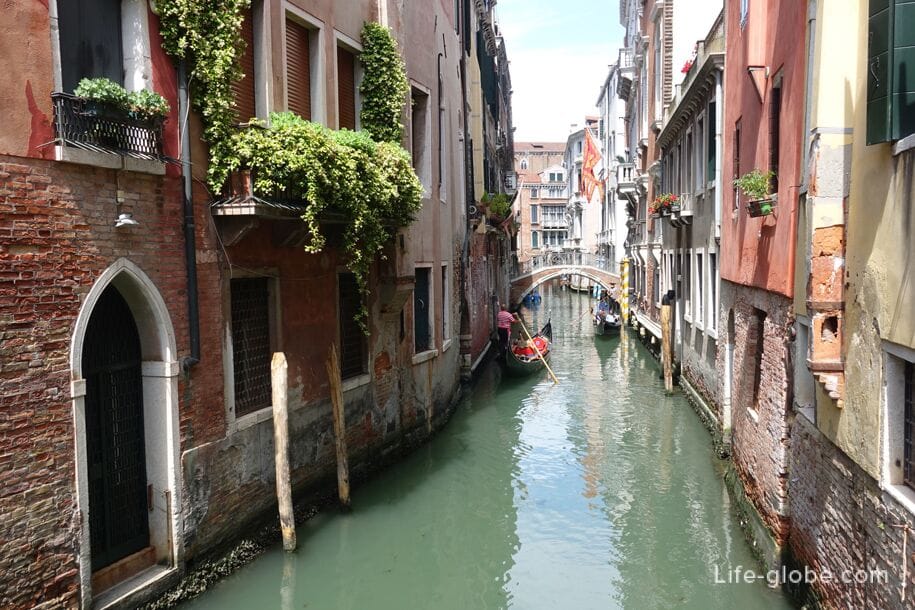
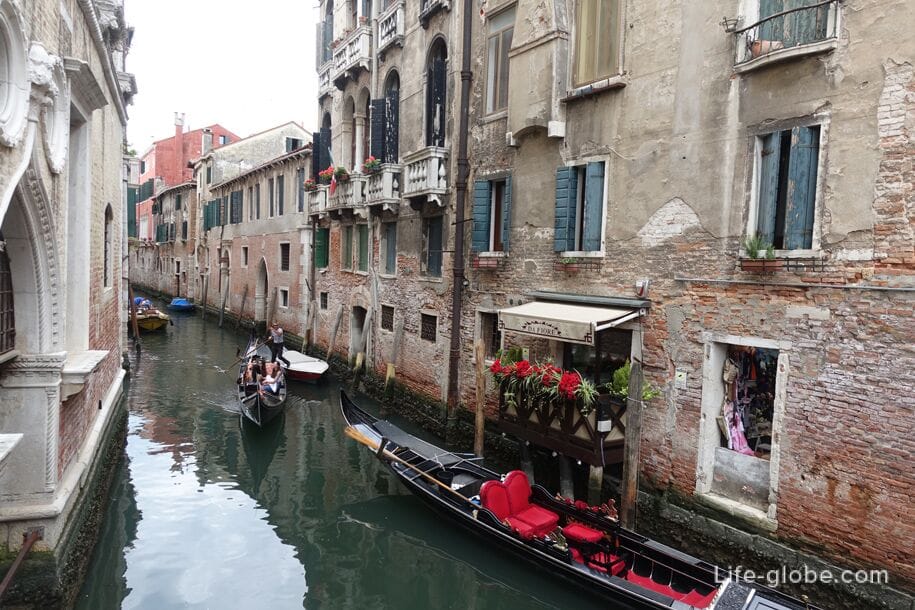
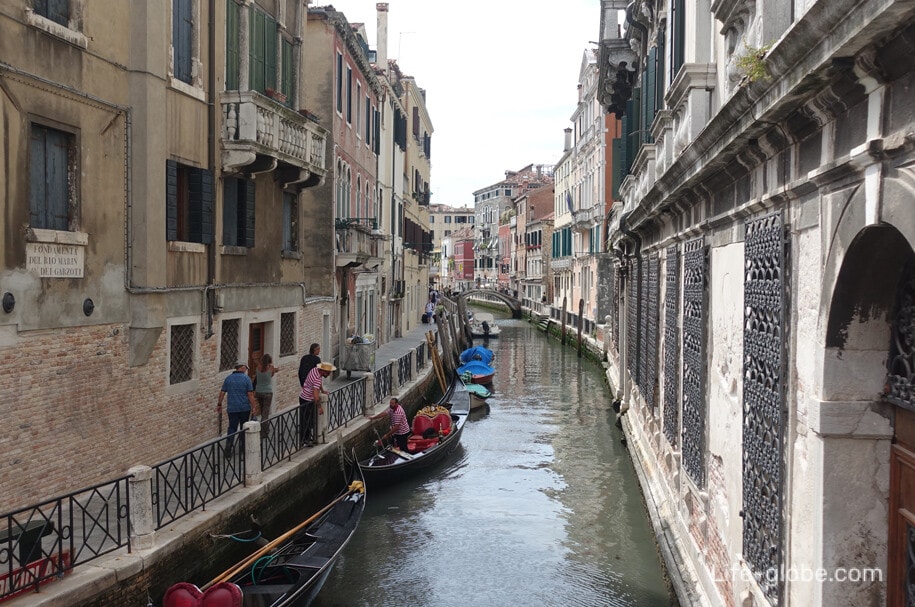
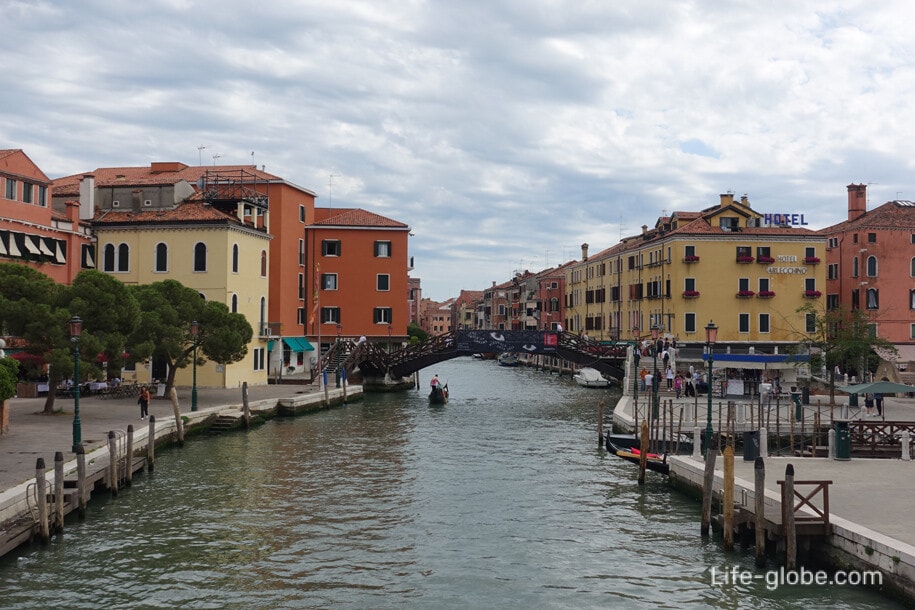
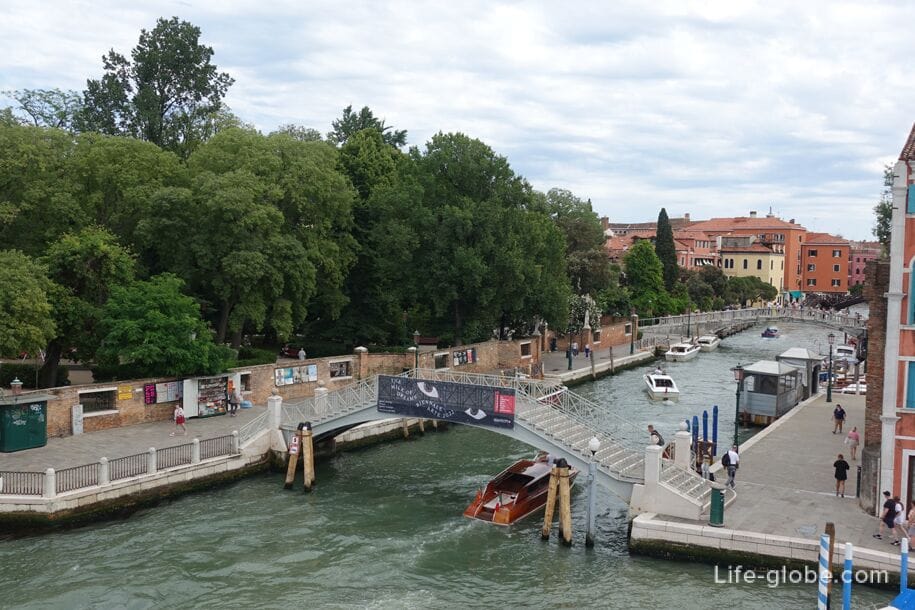
In the island historical center of Venice, it is interesting to walk along the main coastal promenade of the city - Slavyanskaya Embankment (Riva degli Schiavoni, Riva degli Schiavoni).
The Schiavoni embankment runs along the St. Mark's basin, consists of segments connected by pedestrian bridges.
The embankment is famous for palaces, architectural monuments and the monument to Victor Immanuel II. More about Slavyanskaya Embankment...

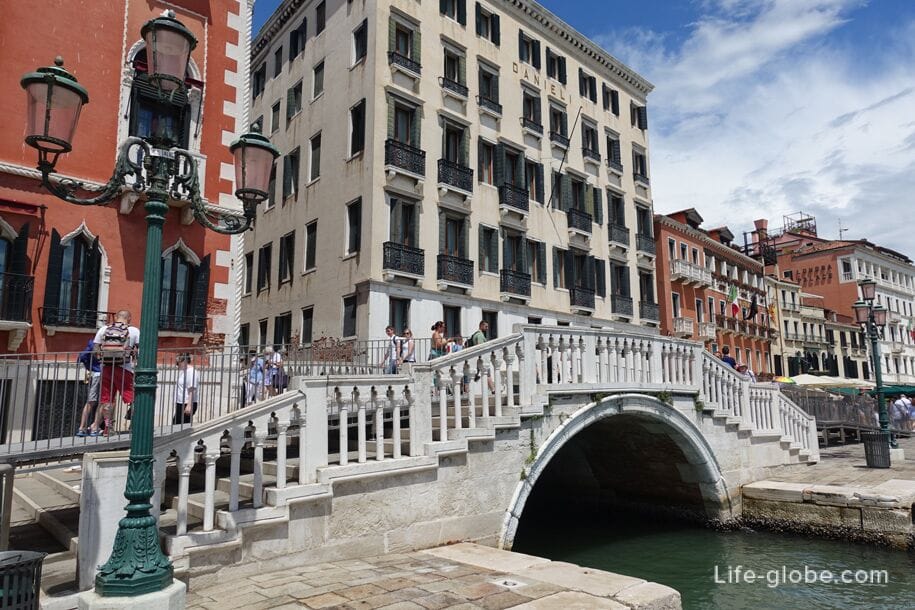
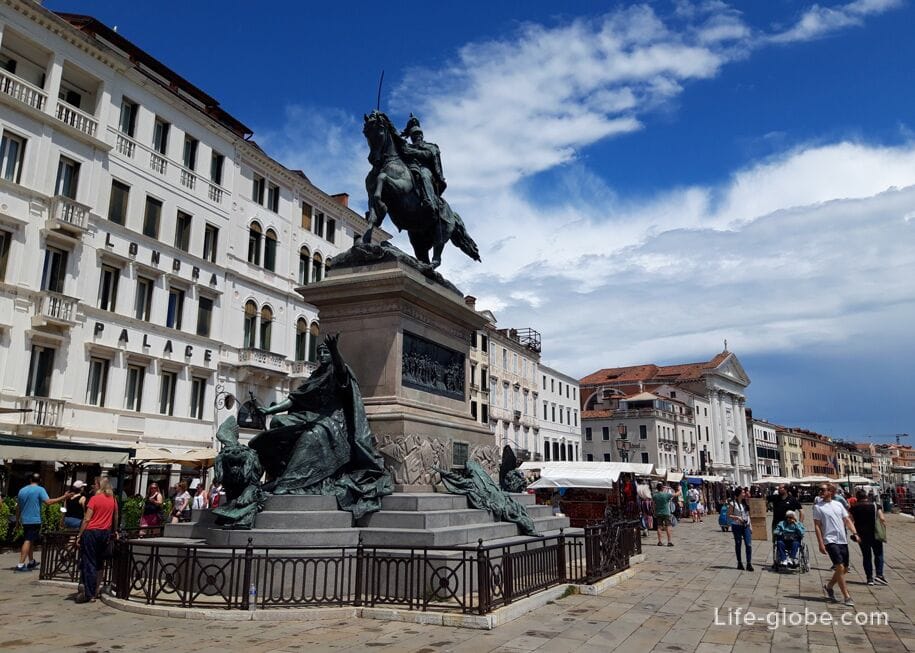
You can see the system of islands and canals of the historical part of Venice and, of course, enjoy all the splendor of the city from the observation deck in the detached bell tower of the Cathedral of St. Gloom (Campanile di San Marco), located on Piazza San Marco.
The bell tower of San Marco is not only one of the symbols and one of the main attractions of Venice, but also the tallest building in the city.
The ascent to the observation tower is paid. Learn more about the campanile and the viewing...
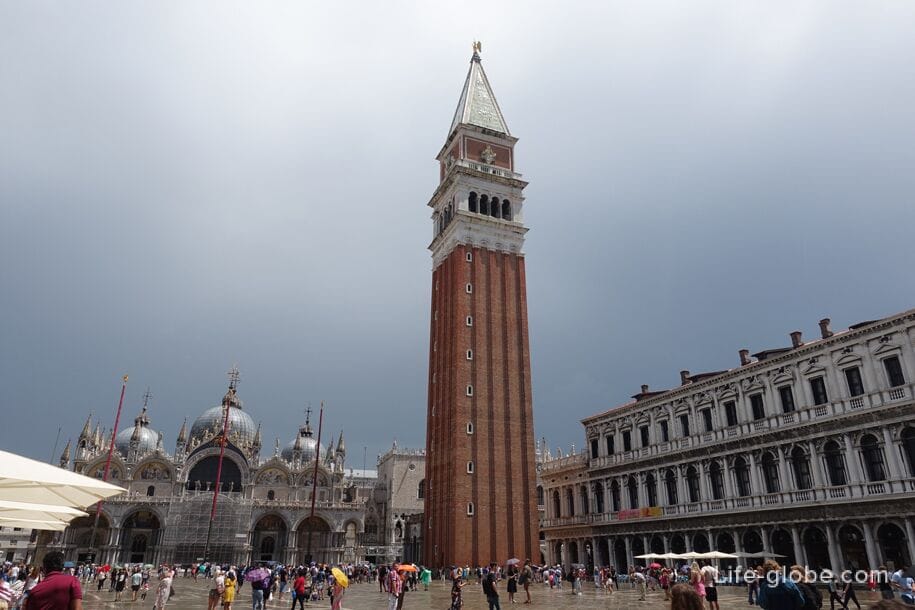

There are also canals and Rio on Murano, and Rio on Burano.
Photo Murano
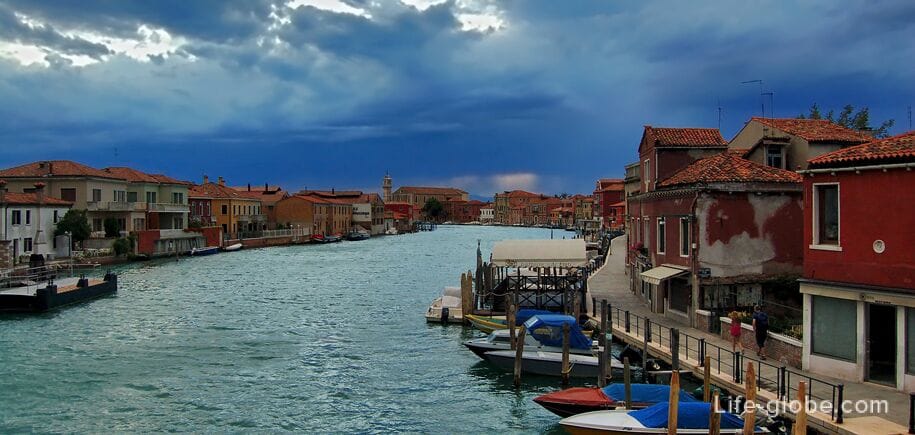

Photo Burano
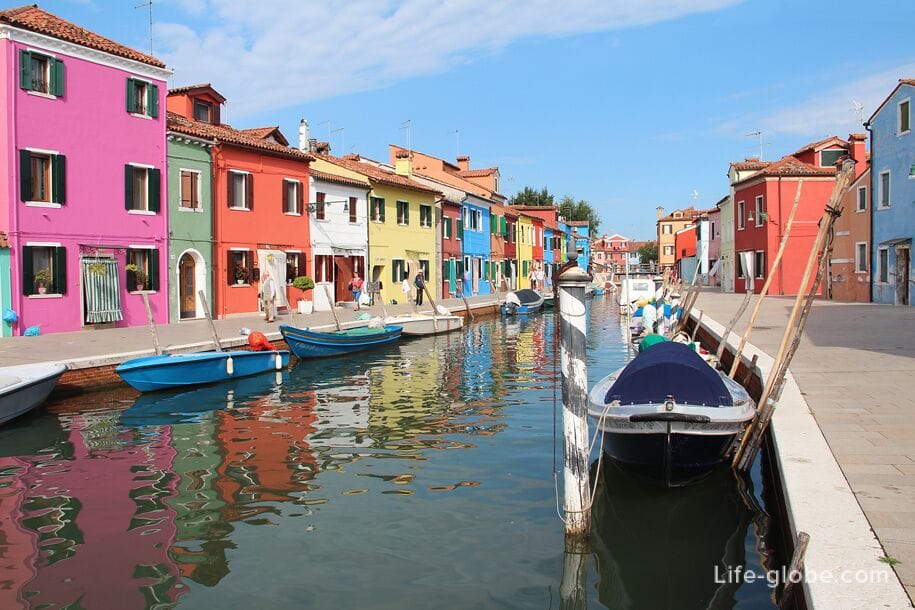
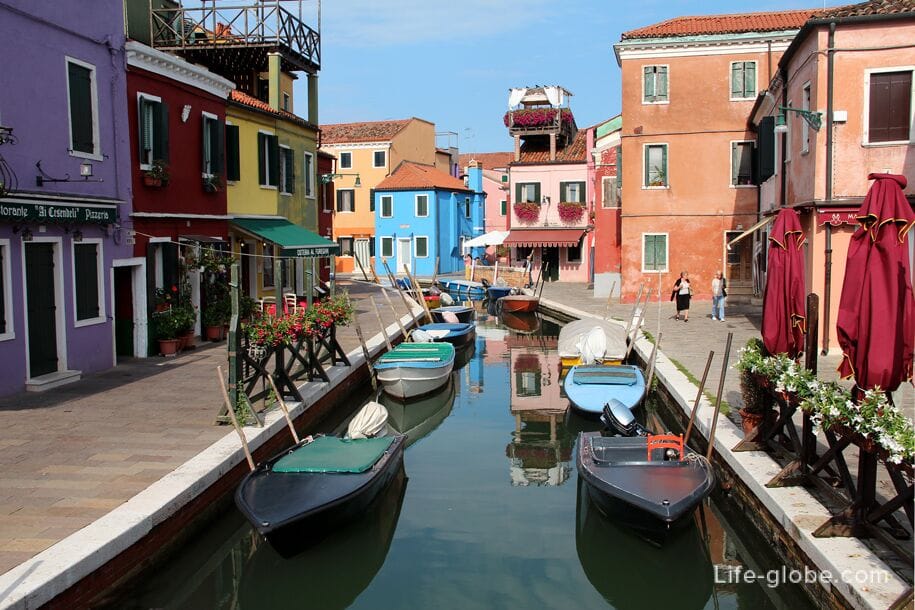
In the island historical center of Venice, you can easily walk along the streets and bridges, through the channels connecting the islands.
In addition, you can move around and (or) take sightseeing boat trips along the canals on gondolas, tragetto or vaporetto. You can also rent a small boat and arrange a private tour.
To Murano, Burano, Lido di Venezia, Torcello, etc. (that is, the islands of the lagoon, which cannot be reached on foot), it is necessary to get by water by water transport.
Gondolas (gondola) are a kind of walking vehicle of Venice ("taxi") and one of the symbols of Venice.
Traghetto is a large gondola that transports across the Grand Canal.
Vaporetto - water public transport, that is, a river tram, a motor ship, a water bus - the meaning does not change from the name change. Vaporettos ply the canals of the historic island of Venice and to the islands beyond. There are various types of tickets on the vaporetto (from 1 trip to a few days' travel) and there are many routes along the channels, including circular ones. There are many berths in the city, including on the Grand Canal and Slavyanskaya Embankment.
Websites of vaporetto companies: actv.avmspa.it, alilaguna.it.
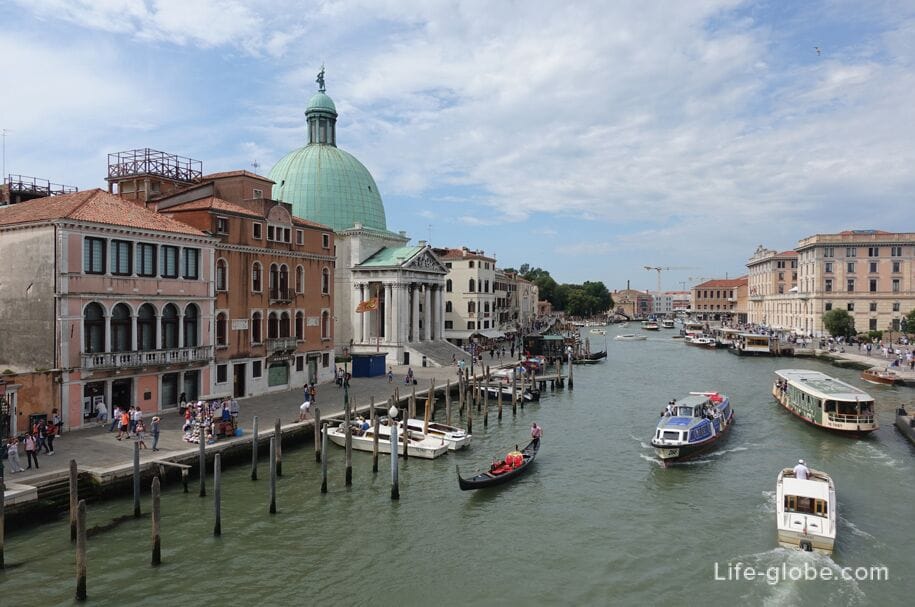

For a better study and leisurely enjoyment of the canals, it is worth considering the option of a guided tour of the canals of Venice
In Venice, there are also tourist boats operating on the Hop-On-Hop-Off system and with an audio guide. They transport travelers through the central areas of Venice, as well as along the lagoon and to the islands of Murano, Burano and Torcello, which allows you to cover the main sights of Venice in a short time. The ticket is valid for 24 or 48 hours.
All accommodation facilities in Venice, including near the canals, in the historical center of the city and more remotely from those, can be viewed and booked here